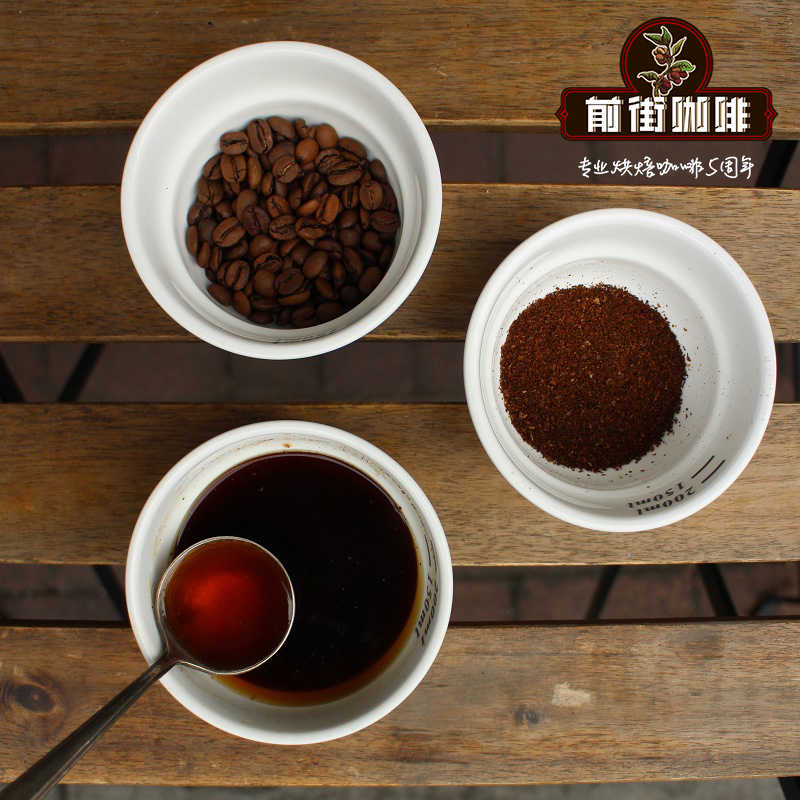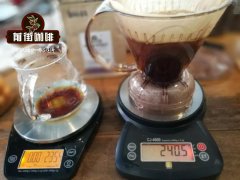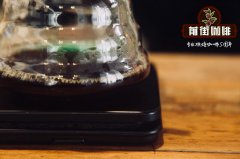No. 21 C.O.E of Colombia in 2010 | Las Caje Kaddura, Las Cochas of Nalinglong Province

Professional coffee knowledge exchange more coffee bean information please follow the coffee workshop (Wechat official account cafe_style)
In 2010, Colombia C.O.E ranked 21st | what is the flavor of Las Caje Kaddura, Colombia species, Las Cochas of Nalinglong Province?
Colombia is currently the third largest coffee producer in the world, originally second only to Brazil, but in recent years Vietnamese coffee, which specializes in the production of Robusta stout beans, has surpassed Colombia's runner-up status. Colombia first planted so-called commercial beans in the mid-1830s. Coffee beans accounted for the largest share of export crops in the 20th century. The local mountainous terrain, coupled with a variety of tropical microclimate, provides an ideal environment for coffee cultivation. The national planting area is about 875000 hectares. The main varieties include Kaddura Caturra, Colombia Colombia, Tibica Tipica, bourbon Bourbon, Elephant Bean Maragogype, and Tabi. Farms and cooperatives across the country, big or small, are distributed in more than 500000 towns and 14 major coffee producing areas-including Nalinglong Nari ñ o, Cauca of Cauca, Meta of Mehta, Huila of Uila, Tolima of Tolima, Quindio of Kindio, Caldas of Caldas, Risaralda of Lisalda, Antioquia of Antioquia, Valle of Valley, Cundinamarca of Cundinamaka, Boyac á of Boyaca. Santander in Santander province and Norte de Santander in northern Santander province. A total of 2 million Colombians depend on coffee cultivation for their livelihood, contributing 12.5 per cent to the gross domestic product of local agriculture, while 75 per cent of coffee bean production is sold abroad, making it the main source of Colombia's foreign exchange earnings.
Traditionally ripe coffee cherries are treated with water, although Colombia's Coffee Research Center has developed a system to protect the ecological environment in the past 15 years, which requires little water and can reduce local water pollution by 90%. And reduce water consumption by 95%, this drying method can not only effectively maintain the ecology, but also ensure stable coffee quality. This drying method is unique in Colombia, where farmers on small farms sprinkle shell beans on the flat roofs of their homes to dry in the sun, or use plastic sheds in colder climates at higher elevations. Colombia is so rich in climate temperature diversity that coffee can be grown and produced almost all year round. The main harvest time is from October of each year to February of the following year, and November and December are harvest periods. The second harvest period is relatively late, which varies according to the microclimate of each producing area.
The owner of the farm, 64 years old, was born in Samaniego city, Shamanigo, Nalingo Nari ñ o. The farm is run by his wife and children. As it is a family farm, Mr. Melo works very hard to make progress, hoping to give his children and grandchildren a good education and teach them the skills they depend on to continuously improve the family's living conditions.
Las Cochas Las Kajes Farm, 12 kilometers from Samaniego city in Shamanigo, is protected by local plants. It is a traditional farm where coffee beans are treated with traditional equipment and dried in the natural sun. Farm owners are very active in community-organized activities, actively participate in seminars on social care or coffee-related skills, and spare no effort to protect the local forest and environment.
Property Characteristics: farm characteristics
Farm Farm name: Las Cochas
Farmer Farm owner: Melo
Rank Rank: 21
City City: Samaniego Shamanigo
Region producing area: Nari ñ o Nalinglong province
Country countries: Colombia Colombia
Farm Size Farm area: 9.60 Hectares ha
Coffee growing area Coffee planting area: 2.60 Hectares ha
Altitude altitude: 2080 m
Coffee Characteristics: coffee characteristics
Variety varieties: Caturra Kaddura 70%, 30% Colombia Colombia
Processing System treatment method: Washed Coffee washing method
Pounds weight: 2469.15 lb (1119.99 kgs kg)
Columbia C.O.E Coffee contest winning beans stickers, to direct coffee to buy Las Cochas Las Cadges farm coffee beans have this chapter commemorative stickers
Top Jury Descriptions judge's comment: the baking degree measured by the cup for 60 seconds at the beginning of the first explosion (Cinnamon)
Aroma aroma / flavor flavor: honey, chocolate, citrus, melon, caramel, plum, raisin
Acid: lemon, tartaric acid, grapefruit
Complex complexity and other other: supple taste, creamy mellow, long-lasting sweet with a cool thin Hehe taste, Nari ñ o Nalinglong province is the representative of Colombia's good coffee, the coffee contest Nari ñ o Na Linglong province accounted for almost all the ranking large and small farms compete for flowers, Las Cochas Las Caggis farm award-winning nutty aroma is obvious, brewed and boiled with citrus. The fruit aroma of plum is mainly, the change curve of acidity in the mouth is round without earthy taste, this is a very delicate and sweet Colombian southern coffee.
Qianjie recommended cooking:
Filter cup: Hario V60
Water temperature: 90 degrees
Degree of grinding: small Fuji 3.5
Cooking methods: the ratio of water to powder is 1:15, 15g powder, the first injection of 25g water, 25 s steaming, the second injection to 120g water cut off, waiting for the powder bed water to half and then water injection, slow water injection until 225g water, extraction time about 2:00
Analysis: using three-stage brewing to clarify the flavor of the front, middle and back of the coffee. Because V60 has many ribs and the drainage speed is fast, it can prolong the extraction time when the water is cut off.
Important Notice :
前街咖啡 FrontStreet Coffee has moved to new addredd:
FrontStreet Coffee Address: 315,Donghua East Road,GuangZhou
Tel:020 38364473
- Prev

Introduction to San Alberto Manor in Quentio, Colombia. Does Flower Valley Coffee contain 50% Rose Summer?
Professional coffee knowledge exchange more coffee bean information please follow the coffee workshop (Wechat official account cafe_style) about Colombian coffee, the first thing that comes to mind is the coffee golden triangle, which is collectively called the coffee triangle by the provinces of Caldas (Caldas), Quindo (Quindo) and Risaralda (Risalda), which produces the best coffee in the world.
- Next

What is the proportion of orange rose summer hand-made coffee in the blue hills of Colombia? is orange rose summer delicious?
Professional coffee knowledge exchange more coffee bean information please follow the coffee workshop (Wechat official account cafe_style) beans: Colombia Hope Manor Blue Hills Orange Rose Summer production area Information: hope Manor Blue Hills / 100% Orange Rose Summer / 1800-2000 m treatment: washing / medium-shallow drying Grinding degree: 4.5g Powder: 15g Powder: 1:16 Water temperature: 94
Related
- Detailed explanation of Jadeite planting Land in Panamanian Jadeite Manor introduction to the grading system of Jadeite competitive bidding, Red bid, Green bid and Rose Summer
- Story of Coffee planting in Brenka region of Costa Rica Stonehenge Manor anaerobic heavy honey treatment of flavor mouth
- What's on the barrel of Blue Mountain Coffee beans?
- Can American coffee also pull flowers? How to use hot American style to pull out a good-looking pattern?
- Can you make a cold extract with coffee beans? What is the right proportion for cold-extracted coffee formula?
- Indonesian PWN Gold Mandrine Coffee Origin Features Flavor How to Chong? Mandolin coffee is American.
- A brief introduction to the flavor characteristics of Brazilian yellow bourbon coffee beans
- What is the effect of different water quality on the flavor of cold-extracted coffee? What kind of water is best for brewing coffee?
- Why do you think of Rose Summer whenever you mention Panamanian coffee?
- Introduction to the characteristics of authentic blue mountain coffee bean producing areas? What is the CIB Coffee Authority in Jamaica?

